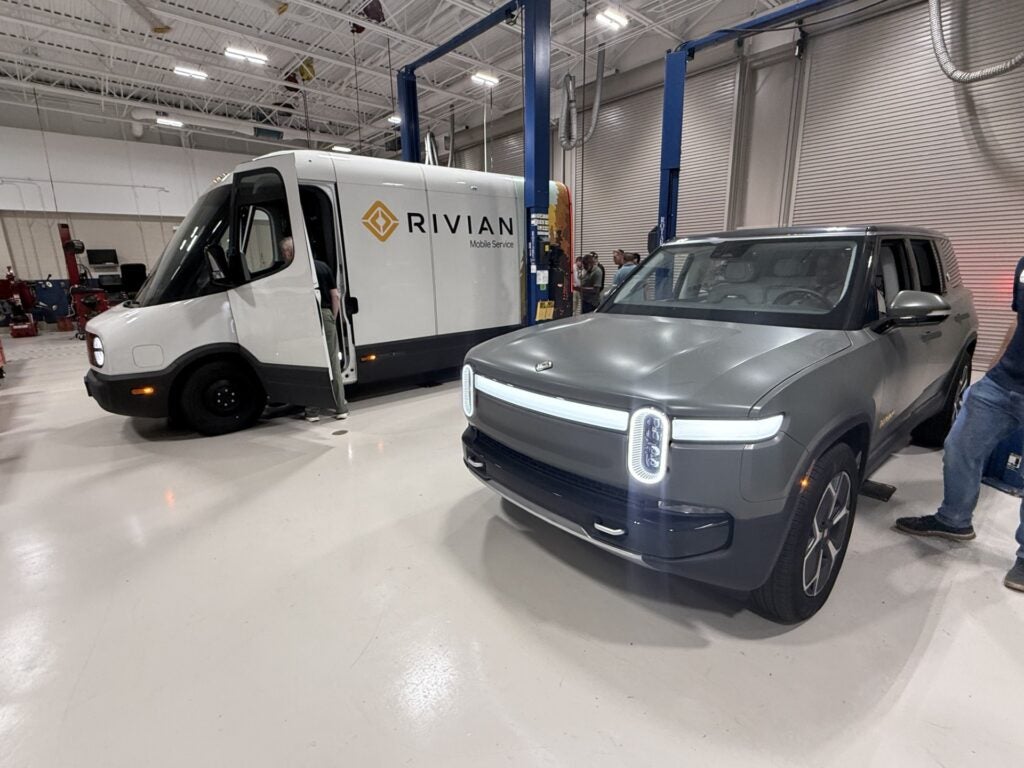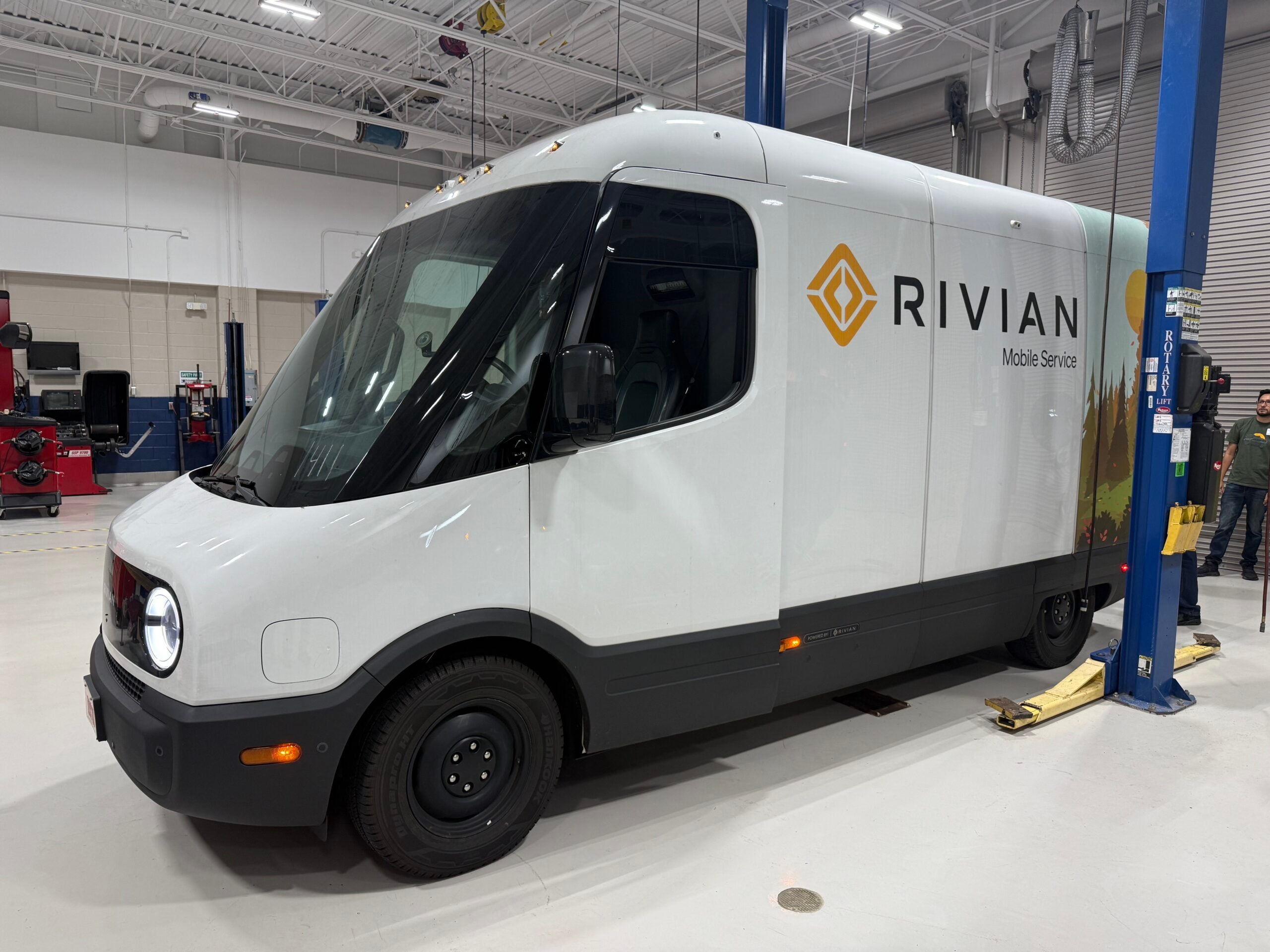Last week I traveled to Warner Robins, Ga. for Rivian Automotive’s “Train the Trainer” event, a two-day long classroom and shop experience designed to help automotive educators get up to speed on emerging electric vehicle technology.
While learning about their product line was enlightening, the thing that took me by surprise was the mobile service truck they brought to demonstrate.
The large van, called a “Delivery 700” model, looks much like the vehicles that Amazon has been using for years in their local delivery network. Emblazoned with graphics, this van had an entire workshop in the back.
Tire changing equipment, air compressor, kitted tool sets for certain operations on their models, and computers full of diagnostic software. The only thing missing was a generator, as everything runs off the vehicle’s high voltage battery.
Each of Rivian’s mobile technicians has one of these vans, and their appointments are programmed into the navigation system. Software alerts customers when the tech is on the way, and scheduling can be changed on the fly. Appointments can be made through the Rivian app on the customer’s phone, so there is no need to even talk to a human.

Most of the repairs and all the maintenance required for Rivian’s models of cars can be done in a customer’s driveway. Technicians are trained for 16 weeks to become mobile technicians and always have support from service centers on standby.
Using mobile service means there is never a trip to the dealer, which is great because Rivian doesn’t have any.
Like Tesla, the sales and service centers are owned by the parent company. Technicians employed by the centers do not work for commission, so their only worry is that the product gets fixed. They also do not have to pay for tools, which let me tell you… is quite the expense.
Since the tech comes to the customer, things like waiting rooms, tow service, and loaner cars are not needed. The service centers can also be smaller, using their space to only handle things severe enough to need a hoist or jobs that are more labor intensive. The customer isn’t inconvenienced as much, and the company saves money.
So why isn’t everyone doing it?
Well, they may be in the future. Due to Rivians being full electric, the maintenance and repairs are simplified, right up until they become very complicated. Services like tune ups, serpentine belts, and oil changes aren’t in the vocabulary here. Major components like drive motors aren’t repaired on site, they are swapped out and sent back to the factory for refurbishment.
Intermittent problems and major complications such as battery replacement will still have to be done in service centers.
In short, mobile service is a piece of cake with an EV. With more companies like Ford and GM moving to a broader EV lineup, mobile service will be a much more viable option. This model has worked well for Tesla and Rivian and could work the same for any manufacturer who is in the same position.
As for me, I will see you on the road!










